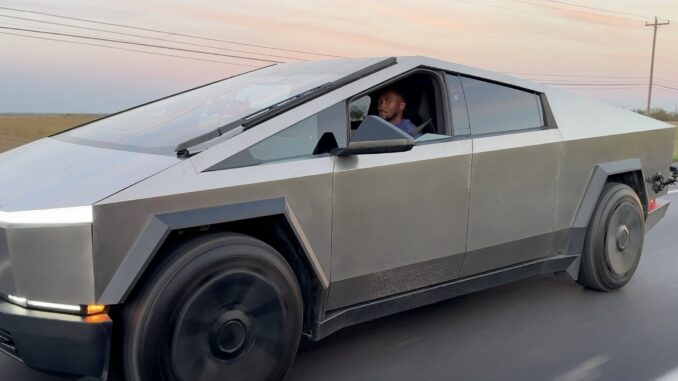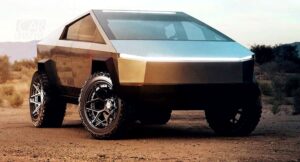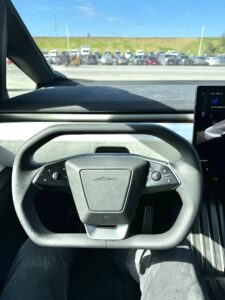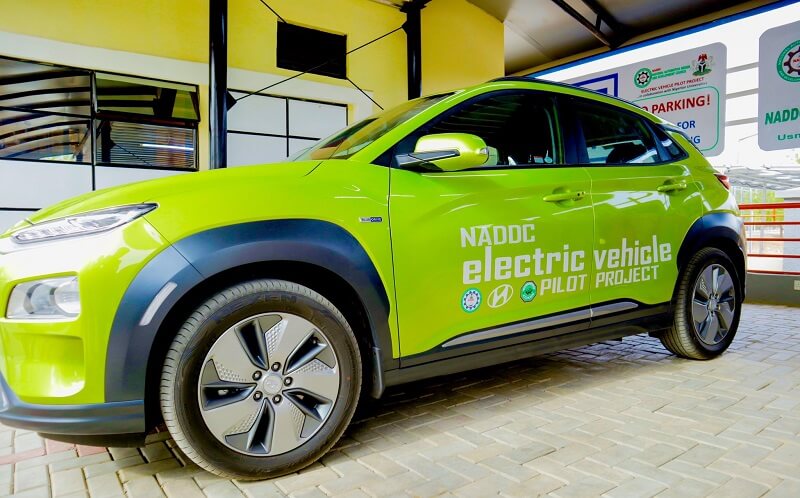

As an avid follower of Tesla and its futuristic advancements in transportation, you’ve come to expect bold, sleek designs coupled with groundbreaking technology from the company that has transformed the electric vehicle industry. However, Tesla’s recent unveiling of its Cybertruck pickup left you feeling perplexed. Its angular, hardened exterior seems a stark departure from the smooth aerodynamic forms of the Model S, X, and 3. Reactions have been polarized. Some see it as a revolutionary step forward that will disrupt the traditional pickup truck market, while others view it as an odd retro-futuristic concept that will struggle to gain mainstream appeal.
As you anticipate the launch of this controversial new vehicle, you find yourself grappling with many questions about Tesla’s radical new design and whether it will be a triumph or tribulation for the pioneering automaker. The Cybertruck threatens to break from tradition or simply break apart expectations – only time will tell.
Tesla’s History of Innovation and Sleek Design
Tesla has built its brand on sleek, innovative vehicle designs paired with cutting-edge technology. The company’s first three models—the Roadster, Model S, and Model X—epitomized this philosophy with their aerodynamic silhouettes and autopilot capabilities.
A Departure from Tradition
The Cybertruck, Tesla’s first pickup offering unveiled in 2019, represents a stark departure from this design tradition. Its angular body is constructed of cold-rolled stainless steel, an alloy more commonly associated with buildings and appliances. The truck’s unconventional styling has polarized observers and dominated discussions about the vehicle.
While Tesla’s initial models targeted eco-friendly consumers embracing emissions-free mobility, the Cybertruck seeks to attract more traditional pickup buyers valuing utility and performance. To that end, Tesla imbued the
Cybertruck with impressive specifications like a 6.5-foot bed, adaptive air suspension, and up to 500 miles of range per charge.
Still, the Cybertruck’s peculiar design risks alienating some potential customers and overshadowing its technological strengths. Tesla hopes pioneering features like a nearly impenetrable exoskeleton, adaptive air suspension, and a solar tonneau cover will overcome any hesitance about the vehicle’s controversial styling. The company is betting longtime pickup owners will ultimately prize the Cybertruck’s capabilities and value over its unorthodox form.
Only time will tell if the Cybertruck’s radical reimagining of the pickup expands Tesla’s customer base or proves too much change too fast for the brand. Tesla has disrupted the automotive industry before; perhaps the Cybertruck can similarly transform expectations for the modern pickup truck. Still, the vehicle’s reception highlights the delicate balance between innovation and tradition that Tesla must continue navigating as it matures.
The Cybertruck’s Unconventional Esthetic

The Cybertruck’s unconventional esthetic is controversial yet consistent with Tesla’s spirit of innovation. Its angular design and stainless steel construction sharply contrast Tesla’s signature curved lines and high-tech materials.
However, Tesla has never strayed from pushing boundaries.
- Exterior: The Cybertruck’s radical exterior resembles an armored military vehicle. Its cold-rolled stainless steel body provides durability and protection but lacks the luxurious finish of Tesla’s sedans. Initial reactions were polarized, with some praising its futuristic concept and others criticizing its harsh, bizarre appearance.
- Interior: In contrast with its rugged exterior, the Cybertruck’s interior focuses on comfort and functionality. It seats up to six adults, with additional storage space for gear and equipment. The interior design incorporates sustainable materials like vegan leather and durable fabrics.
- Purpose: The Cybertruck is Tesla’s first electric pickup, expanding into a new market segment. Pickups comprise a significant portion of vehicle sales, especially in North America. The Cybertruck aims to provide the utility of a traditional pickup with the high performance and zero emissions of an electric vehicle.
The Cybertruck may be Tesla’s most controversial vehicle yet in terms of esthetics and practicality. However, its all-electric architecture and groundbreaking design embody the innovative spirit that Tesla is known for. The Cybertruck pushes the boundaries of what an electric vehicle can be and broadens Tesla’s appeal to new audiences. For better or worse, the Cybertruck is a radical experiment that only Tesla would dare to attempt.
Mixed Reactions to the Cybertruck’s Polarizing Design
The reveal of Tesla’s Cybertruck in November 2019 was met with mixed reactions from industry experts, investors, and the public. While some praised its futuristic design and groundbreaking features, others criticized its polarizing appearance and questioned its mainstream appeal.
A Radical Departure in Design
The Cybertruck’s triangular exoskeleton construction and stainless steel exterior deviate sharply from standard truck styling and Tesla’s typical curved designs. CEO Elon Musk described it as “an armored personnel carrier from the future.” Supporters viewed the Cybertruck as a bold, visionary move that could revolutionize the segment. Detractors argued its unconventional looks would limit its customer base.
Impressive Performance and Functionality
The Cybertruck’s specs are undeniably remarkable. It can accelerate from 0 to 60 mph in under 3 seconds, has an estimated battery range up to 500 miles per charge, and features nearly impenetrable stainless steel body panels. The adaptive air suspension also allows significant ground clearance and stability. However, some questioned if these impressive statistics would translate into strong sales.
A Polarizing Market Reception
Reactions on social media and in the press ranged from enthusiasm to confusion. While Tesla’s loyal fans preordered the Cybertruck in droves, its divisive styling could deter more mainstream buyers. The truck’s unconventional design may ultimately limit its ability to compete with offerings from legacy automakers like Ford and GM, which cater to more traditional tastes. Tesla’s history of taking risks in design and technology has fueled their success, but the Cybertruck could prove to be a step too far
outside standard conventions and comfort levels for most truck owners and buyers.
The Cybertruck is a bold gamble by Tesla that could either revolutionize the pickup market or become an oddity. Its reception highlights the tensions between innovation and tradition. Only time will tell if the Cybertruck’s radical vision is ahead of its time or a step too far for most consumers.
Elon Musk Defends the Cybertruck on Twitter
Elon Musk, the CEO of Tesla, took to Twitter to defend the Cybertruck’s unconventional design following its unveiling. In a series of tweets, Musk explained his vision for the all-electric pickup truck and addressed criticisms from analysts and consumers.
Function Over Form
Musk emphasized that the Cybertruck’s angular body was dictated by its function and purpose as a durable work vehicle. He tweeted: “Cybertruck is designed to have the functionality of a truck and the performance of a sports car.” The stainless steel exoskeleton and wedge shape were engineered for maximum passenger and cargo space as well as high performance.
Musk argued that traditional pickup truck designs are “not optimal” and have essentially remained unchanged for decades. The futuristic Cybertruck is meant to disrupt that stagnation. As Musk put it, “Trucks have been the same for like 100 years. Time for something different!” His unorthodox approach has certainly delivered on that promise, though not without controversy.
Addressing Criticism
In response to complaints about the Cybertruck’s polarized styling and comparisons to a stealth bomber or DeLorean, Musk said “the weirdness grows on you.” He suggested that initial reactions tend to be overly critical, but people will appreciate the design more over time. Musk also pointed out that negative responses are inevitable with any bold innovation that challenges convention.
Overall, Musk’s tweets reveal his vision for pushing the automotive industry in radical new directions. While the Cybertruck’s futuristic design is polarizing, Musk believes its performance, functionality and environmental benefits will ultimately win over skeptics. Only time will tell if Musk’s confidence in this
unconventional pickup truck proves justified. The Cybertruck has the potential to either revolutionize the EV market or become an eccentric flop.
The Future of the Cybertruck: Revolutionary or Out of Touch?

The Cybertruck’s polarizing design and features raise questions about whether it will revolutionize the truck market or prove out of touch with traditional truck owners. On the one hand, Tesla’s visionary designs have disrupted the automotive industry before. The all-electric Cybertruck pushes the envelope with its stainless steel exoskeleton, origami-like folding design, and sci-fi esthetics. If it delivers on promised capabilities like high performance, durability and utility, it could attract early adopters and younger, tech-savvy drivers.
However, the Cybertruck’s unconventional appearance and limited range may alienate traditional truck owners who value functionality, reliability and familiarity. Its futuristic design contrasts sharply with the traditionally rugged, masculine image of pickup trucks. The all-electric range and recharging requirements also do not yet match the range and refueling convenience of gas-powered trucks for some owners.
Tesla will have to work to overcome skepticism and address concerns to make the Cybertruck viable and appealing to mainstream truck buyers. Education and experiences may help acclimate customers to the truck’s novel design and technology over time. Options to improve range and recharging may also sway hesitant buyers. However, if the Cybertruck remains a niche product, it risks being seen as an out-of-touch concept that does not fundamentally reimagine the pickup for most truck owners.
The Cybertruck represents a bold vision of the future of electric vehicles and sustainable transport. Its reception will indicate whether the market is ready to embrace such an unconventional concept or still demands more incremental innovation. Tesla may once again prove its foresight and catalyze a shift in consumer expectations. Alternatively, the Cybertruck could become a cautionary tale of being too far ahead of customers. The coming years will reveal whether the Cybertruck is remembered as revolutionary or out of touch.
Conclusion
While the Cybertruck’s unorthodox styling and features may polarize consumers, its all-electric powertrain and high-tech materials demonstrate Tesla’s commitment to pushing the envelope. Love it or hate it, the Cybertruck is forcing us to imagine what the vehicles of tomorrow might look like. As Tesla leads the charge into an all-electric future, the Cybertruck’s bold design choices remind us that innovation often comes with controversy. Though breaking from tradition is never easy, it can lead to exciting new possibilities. The Cybertruck may be just the jolt the auto industry needs.

Be the first to comment